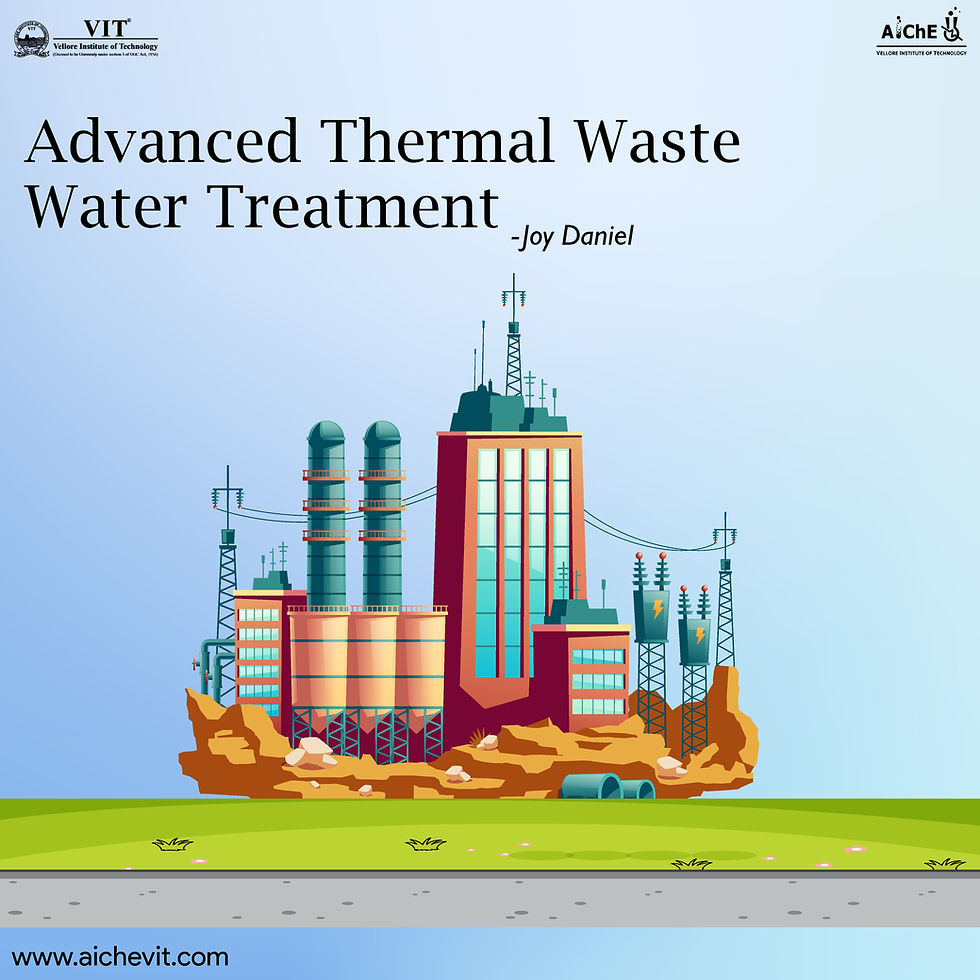Materials in relation to Thermoelectricity
- AIChE-VIT

- Jun 30, 2022
- 3 min read

An exceptionally fascinating opportunity to investigate the relationship between theory and experiment is offered by thermoelectricity. The thermoelectric effect converts temperature differences directly into electric voltage and vice versa with the help of a thermocouple.
Thermoelectric materials come in three primary categories.
1. Bismuth Telluride alloy (Bi2Te3)
It is a semiconductor, which is excellent for transporting electricity, but not heat. The best operating temperature is less than 450°C, which can be utilised for thermoelectric refrigeration. The thermoelectric quality factor for usage in room temperature modules is increased by alloying bismuth telluride with antimony telluride and bismuth selenide for n-type and p-type materials, respectively. The alloy composition is an essential technical parameter since electronic and thermal transports can differ significantly. The thermoelectric performance of the n-type Bi2Te3-x-Sex alloy is inferior to that of its p-type counterpart, and it is more difficult to engineer because it is less amenable to straightforward transport modelling. The complicated electronic structure dynamics and trends in lattice thermal conductivity are investigated using a combination of published data and recent findings across the whole alloy composition range. The location and degeneracy of the numerous conduction band minima are strongly influenced by spin-orbit interaction.

2. Lead Telluride Alloy (PbTe)
An intermediate thermoelectric power source, the melting point of PbTe is 905 °C. It can cause irritation in a person's skin, stomach, and respiratory system and induce nausea, diarrhoea, or vomiting. Despite these ill effects, PbTe is predominantly used in thermoelectric generators, operating at a maximum working temperature of 900 K. In addition to having a high figure of merit Z, PbTe also possesses a high melting point, good chemical stability, low vapour pressure, and good chemical strength.
Recent thermoelectricity research intends to produce new, improved materials for independent electrical power sources in specialised medical, terrestrial, and space applications, and also create an unconventional energy source in response to the 1974 oil crisis. Thermoelectric generators have a very low efficiency—typically around 5 per cent—but their other benefits, including their compactness, quietness, dependability, long lifespan, and ability to run for extended periods without being noticed, have led to a wide variety of applications. PbTe thermoelectric generators are widely used in the US Army, spacecraft for in-vehicle power sources, and batteries for cardiac pacemakers. The factors that influence the general physical properties and figure of merit of lead telluride have been reviewed.
Various methods have been proposed to improve the figure of merit of the material, such as the effect of particle size on the decrease in lattice thermal conductivity λL. A comparison of some transport properties between lead telluride and other thermoelectric materials and how cold press and hot press techniques are used to produce mouldings with transport properties very similar to single crystal values from PbTe powder.
3. Silicon-Germanium Alloy
A frequently employed type of semiconductor in thermoelectric generators, Si-Ge composites have recently been studied as anode materials for lithium-ion batteries due to their stable cycle performance and excellent rate performance. Previous reports have shown the benefits of Si-Ge composites over electrochemical performance, but certain mechanisms and structural effects have been overlooked. Here, the structural effects of non-uniform Si-Ge nanostructures on mechanics and dynamics are systematically investigated through theoretical analysis and detailed experimental results. This study uses Si-Ge and Ge-Si core-shell nanowires. Si-Ge core-shell nanowires have significantly improved electrochemical performance, especially cycle performance and rate capability, compared to Ge-Si core-shell nanowires. Based on detailed experimental results and associated theoretical analysis, the strain distribution and Li diffusion coefficient and/or diffusion path are greatly influenced by the Si-Ge heterostructure that induces various dynamics and kinetics associated with lithium.

Thermoelectricity is used in various fields such as infrared detectors, lasers and computer chips. Russian MIG fighters use thermoelectric cooling to control their infrared detection system. This technology will find a wider range of applications in the future and make the world more efficient.
- Kaushik RLN





Great research dude
Great write-up Kaushik! Terrific analysis!